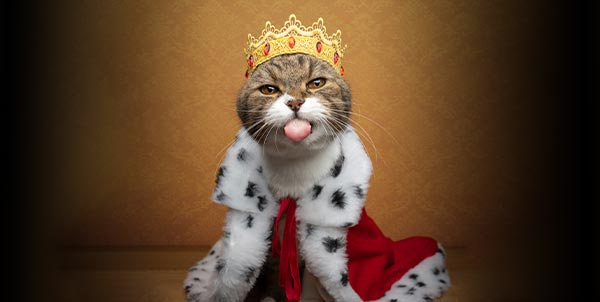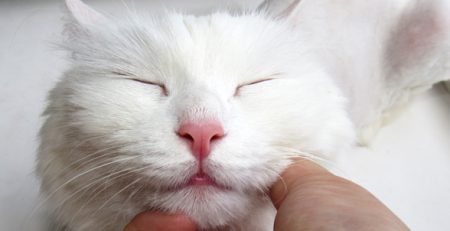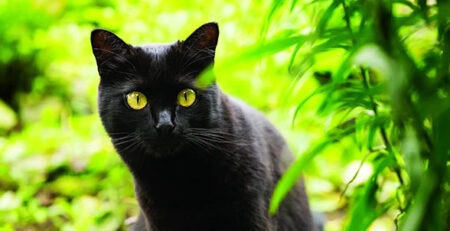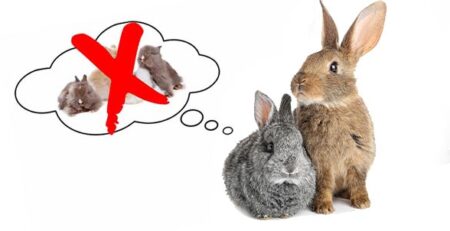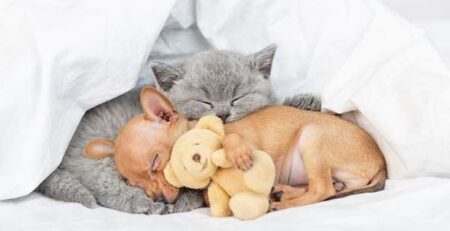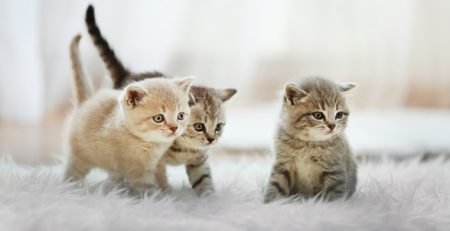Table of Contents
World Cat Day is celebrated worldwide on February 17.
Cats have fascinated humans since the dawn of time, and even the ancient Egyptians worshipped them as gods so much that they condemned those who harmed them to death.
Deceased cats were mummified according to the same procedures used for humans.
What greatly fascinated the Egyptians was the physical perfection of the cat, called Mau (from the onomatopoeic verse) by them.
Cats, which have been attributed mystical powers since the earliest times, have always been the protagonists of myths, legends, and superstitions but also of cruel and unjust persecution.
In the centuries of the Middle Ages throughout Europe there was a real hunt for cat
In Europe, from the year 1000 until the 1700s, thousands of cats (particularly black ones) were slaughtered because they were believed to be demonic creatures.
To counter pagan rites for which cats were instead objects of worship, Pope Gregory IX even issued a bull by which he authorized the extermination, in God’s name, of all cats as enemies of the faith and believed to be embodiments of the evil one.
One thing is certain and evident: cats are the undisputed protagonists of the collective imagination and culture in every corner of the world.
Cat Day and trivia from around the world
If you frequent Japanese restaurants, you will certainly have noticed the ever-present figurine depicting a cat with a paw raised in a nod of invitation or greeting.
Well, a Japanese legend has it that a samurai, while hunting near a temple, noticed a kitten that was beckoning him to come closer with paw nods.
Intrigued, the warrior headed toward the cat, and a moment later lightning ripped through the air and struck the very tree he had been standing near until a moment before.
The Samurai realized that the cat had just saved his life.
Thus was born the custom of placing a figurine of the Maneki Neko, this is the name of the cat, in the entrance of homes or businesses as a good luck talisman.
Japan even holds an annual festival dedicated to Maneki Neko on September 29.
Within Japanese folklore we also have the legend of the cat Bakeneko
The Bakeneko is a supernatural creature that looks like an ordinary cat but is larger in size.
He has the ability to walk on his hind legs, create ghostly fireballs and assume human features while maintaining feline traits.
In the British Isles we find the Cait Sith
Actual sightings of this variety are attributed to the Scottish Kellas breed, a cross between a domestic and a wild cat.
It is a large feline, all black with a large white patch on its chest.
The Irish believed it was a fairy creature.
The Scots, on the other hand, believed that she was a witch capable of turning into a cat nine times; the ninth and last time she would definitely remain a cat.
Also in Scotland we have the big-eared cat, a descendant of Irusan, the King of Cats; this according to tradition was capable of granting any wish.
Mexico and the United States: the cactus cat
A feline legend also hovers in the deserts in northern Mexico and those in the southwestern United States, and it is the one about the cactus cat.
The story tells of a cat that instead of fur has thorns and instead of claws has blades with which it rips open cacti to then drink their fermented juices i.e. pure alcohol days later.
Once drunk of cactus juice and rotten drunk, the cat wanders the desert to sober up, damaging things and even beating people.
Whether bizarre or far-fetched, myths and legends always have a kernel of truth.
In the case of cats, one thing is undeniable: extraordinary abilities are attributed to these intriguing animals.
But what makes cats evocative, magnetic and special?
Cats possess a sixth sense that we humans lack, but these are not magical powers but rather an absolutely unique sensitivity that enables them to perceive even the invisible.
Their whiskers, the “vibrissae,” constitute a fundamental sensory organ with which they perceive their distance to objects but also the position and movement of other humans and nonhumans before they have even seen them.
The line between truth and legend thus lies in the extreme sensitivity that felines possess and their innate ability to sense invisible vibrations that are incomprehensible to the unfortunately not particularly developed human senses.
Even today so many prejudices and absurd superstitions
The belief that the black cat brings bad luck and other many clichés about the character and behavior of the cat, which is often accused of indifference and opportunism, are still quite widespread today.
The eternal dilemma that divides: are cats cold and opportunistic or affectionate and selfless?
Cats love human companionship and can also suffer greatly from missing the people they become attached to.
Commonplaces arise from a lack of knowledge related to cat language and nonverbal expressions that are often misunderstood.
Some cats are adapted to human displays of affection, but kissing and hugging are generally not part of normal displays of love.
Pampering yes but at their discretion and without overdoing it
Cats’ reactions, responses, and moods vary depending on the stimuli given by their surroundings, experiences, physical and mental conditions, and the quality of life they experience.
Therefore, do not expect a cat to have the same displays of affection as dogs or people or any other animal.
Nor is it fair or logical to say that cats do not love humans or have feelings just because they do not behave like dogs or like us.
It is important to respect their preferences and habits and above all, not to be disappointed when they express their displeasure clearly and assertively.
Cats do not tell them off, but misunderstandings always arise from our inability to understand and accept them for what they are.
If you would like to learn more, know that our Staff Veterinary Doctors are always available to you: request a consultation with our Behaviorists to better understand your cat’s language.
We also remind you that in case of necessity and urgency, Clinica La Veterinaria is always open, every day including holidays and with First Aid service from 8 pm to 8 am.
For the joy of seeing them HAPPY

